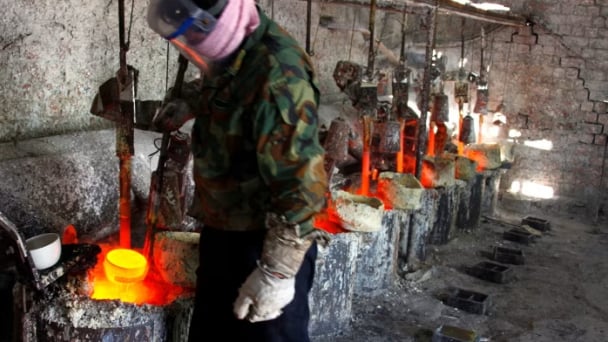June 21, 2025 | 01:36 GMT +7
June 21, 2025 | 01:36 GMT +7
Hotline: 0913.378.918
June 21, 2025 | 01:36 GMT +7
Hotline: 0913.378.918

A boat is surrounded by green algae off the coast of Qingdao in eastern China's Shandong province on Jun 17, 2021. Photo: AP
The thick layer of plants that has coated waters and clogged beaches appeared last month and is reportedly the heaviest on record.
Such blooms can displace critical food sources for ocean animals while giving off a strong smell.
State media reported on Thursday (Jul 8) that the outbreak has spread over around 9,290 sq km.
The Xinhua News Agency said authorities have deployed about 7,300 vessels that have thus far collected around 217,700 tonnes of algae.
Qingdao has seen such outbreaks for at least 15 years, but never on this level. Similar blooms have occurred in inland waterways such as Lake Tai to the south of Qingdao in Jiangsu province.
Xinhua said a large patch of algae was first spotted drifting northward from the coast of Jiangsu in mid-May, blooming and thickening as it went.
Algae blooms can occur naturally, but are thought to be growing worse due to a rise in sea temperatures and the heavy use of chemical-based fertilisers.
They are also appearing more widely, with outbreaks seen from California to the Suez Canal.
(AFP)

(VAN) Poultry production in Poland, which has only started recovering from devastating bird flu outbreaks earlier this year, has been hit by a series of outbreaks of Newcastle disease, with the veterinary situation deteriorating rapidly.

(VAN) Extensive licensing requirements raise concerns about intellectual property theft.

(VAN) As of Friday, a salmonella outbreak linked to a California egg producer had sickened at least 79 people. Of the infected people, 21 hospitalizations were reported, U.S. health officials said.

(VAN) With the war ongoing, many Ukrainian farmers and rural farming families face limited access to their land due to mines and lack the financial resources to purchase needed agricultural inputs.

(VAN) Vikas Rambal has quietly built a $5 billion business empire in manufacturing, property and solar, and catapulted onto the Rich List.

(VAN) Available cropland now at less than five percent, according to latest geospatial assessment from FAO and UNOSAT.

(VAN) Alt Carbon has raised $12 million in a seed round as it plans to scale its carbon dioxide removal work in the South Asian nation.